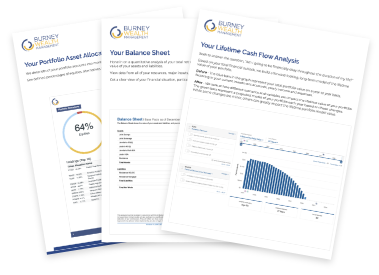SECURE Act: A quick guide to the major changes and corresponding planning considerations

In the 11th hour of 2019, Congress looks poised to pass a bipartisan appropriations bill that will help avert another government shutdown and put into effect some of the most significant legislative changes for retirees we’ve seen in the last decade through the SECURE Act.
The SECURE Act (Setting Every Community Up for Retirement Enhancement) received plenty of attention this year but was never taken seriously given the pending 2020 election and significant impact the proposed changes would have on investors.
However, policymakers attached the SECURE Act to the final spending bill. Barring President Trumps refusal to sign it, which is considered unlikely, these major retirement changes will take effect on January 1, 2020.
While everyone works to better understand the bill and its long-term implications, we highlight below what we perceive to be the 3 most significant and relevant changes along with financial planning strategies to consider:
Major Change #1: The age for mandatory distributions from retirement plans increases from 70½ to 72.
Currently, Required Minimum Distributions (RMDs) from pre-tax retirement plans must begin in the year you turn 70 ½. This is the government’s way of forcing an income-generating event to make sure they get their share of tax dollars you deferred for as long as several decades. The SECURE Act bumps the timeline back by a year and a half, giving people more time to defer taxes and consider strategies to reduce their RMDs.
Financial Planning Consideration:
Retirement Withdrawal Strategy: One of the key components of any retirement income plan is determining which “bucket” to pull your income from and when. Clients with taxable accounts, Roth accounts, and pre-tax accounts will need to carefully revisit how they are generating their retirement paycheck given the delayed RMD start date. The current multi-decade low tax environment might still make it attractive to pull funds from your regular IRA and pay the tax bill today versus later at potentially higher tax rates. This change also allows additional time to consider converting pre-tax dollars to Roth dollars before minimum distributions start. Roth assets are not subject to the minimum distribution rules during your lifetime.
Major Change #2: When inheriting an IRA, all distributions must be made by the end of the 10th year after death, except for distributions made to certain eligible designated beneficiaries.
Currently, when an individual inherits a retirement plan, like a 401(k), traditional IRA, or Roth IRA, they can spread the RMDs over their own life expectancy. However, the SECURE Act includes a “revenue-generating” provision that would require most beneficiaries to distribute the account over a 10-year period. This change will accelerate the depletion of inherited accounts for many large IRAs and retirement plans.
Financial Planning Consideration:
Roth Conversions and Legacy Planning: Inheriting a large pre-tax IRA is now a potential tax nightmare for beneficiaries. The requirement to pay ordinary income tax on what could be a significant amount of funds over just a ten-year period raises the stakes for careful pre-death planning. While Roth assets are still subject to the ten-year rule, these funds, which have already been taxed, will be passed on to the beneficiary completely tax free. Investors need to carefully consider the benefits of converting pre-tax IRA dollars to Roth dollars at potentially lower rates during their lifetime as part of their estate plan. It is also important for transparency around how much you might pass on to the next generation given your current income and spending requirements. Quantifying your legacy planning goals will allow you to confidently act on these planning strategies while also allowing you to enjoy your money in your lifetime.
Major Change #3: The prohibition on contributions to a traditional Individual Retirement Account (IRA) by an individual who reached age 70 ½ is repealed.
Currently, pre-tax retirement savings in IRAs for people who continue working later in life is discouraged. After age 70 ½ you can no longer contribute to an IRA but, surprisingly, can still contribute to a Roth IRA. The SECURE Act removes this savings limitation by repealing the age limit for traditional IRA contributions.
Financial Planning Consideration:
Revisit Your Saving Strategy: Part of any sound financial plan is a clear understanding on where excess cash flow should be saved. As life expectancies continue to rise and people work longer, the ability to save into pre-tax IRAs past the age of 70 ½ might provide a tax benefit and a more secure retirement.
NOTE: There are other changes embedded in the SECURE Act related to retirement plan annuities, the use of retirement funds for adoption expenses, and tax credits for employers who sponsor retirement plans. We feel the above represent the changes warranting the most immediate attention.
As we experienced with the major tax law changes in 2017, the SECURE Act will bring some surprises but also opportunities for those who plan carefully. As our team carefully reviews these updates, we will be prepared to speak with you about how these changes are relevant to you and your situation.
The Burney Company is an SEC-registered investment adviser. Burney Wealth Management is a division of the Burney Company. Registration with the SEC or any state securities authority does not imply that Burney Company or any of its principals or employees possesses a particular level of skill or training in the investment advisory business or any other business. Burney Company does not provide legal, tax, or accounting advice, but offers it through third parties. Before making any financial decisions, clients should consult their legal and/or tax advisors.


